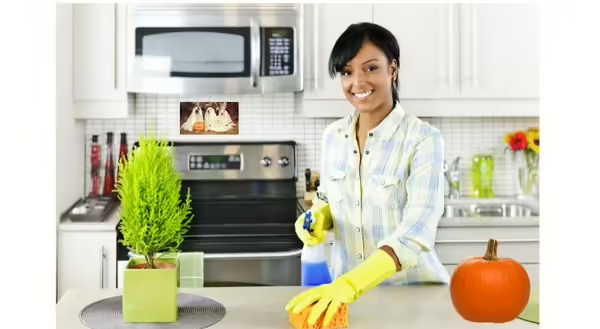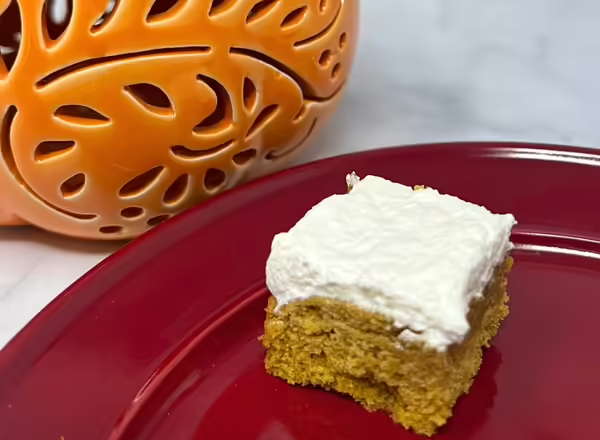
The celebration of Labor Day quickly moves us into the fall season. It's a welcome transition to cooler weather - some even say "sweater weather." Another transition is the expectation of seasonal fall foods. They bring back memories of delicious warm cider, lattes, apples, and meals in the slow cooker. Fall fruit and vegetables are harvested, including pumpkin. Pumpkin is used in meals and desserts, try the recipe below for pumpkin bars this season.
When cooking seasonal foods, add food safety to your recipes. For example, making pumpkin bars or a cake includes raw flour and eggs in the ingredients; both known to cause foodborne illness if eaten raw. Raw eggs can carry Salmonella bacteria. The harmful bacteria Escherichia coli (E. coli) can contaminate flour – from its original grain form in the field through the processed stage sold to consumers. Both bacteria can cause mild to severe symptoms of food poisoning. Cook or bake recipes containing raw eggs or flour at the proper temperature for the correct length to eliminate the risk.
Apply the four core practices to food safety in your kitchen:
Clean
- Wash hands with warm, soapy water for 20 seconds before and during baking, including after handling raw eggs and flour or unbaked batters.
- Wear an apron, tie back hair, remove jewelry, and avoid licking fingers.
- Wash surfaces and utensils frequently.
- Clean kitchen countertops with a bleach solution (one teaspoon of unscented liquid bleach per four cups of water), rinse, and air dry.
- Wash bowls and equipment in a dishwasher or with hot, soapy water. This includes measuring cups, spoons, spatulas, scrapers, and mixer parts. Use clean dishcloths and oven mitts.
- Keep bleach wipes or solution handy to wash countertops in between baking.
Separate
Keep raw eggs and flour separate from other ingredients. Flour dust can spread quickly. Chop nuts and dried fruits on a clean cutting board for ready-to-eat foods, away from raw eggs and flour. Wash cutting boards and equipment that come in contact with raw eggs or flour dust in a dishwasher or hot, soapy water.
Cook
Follow the directions for cooking baked goods at the proper temperature and time. Use a food thermometer. Cakes, cupcakes, quick breads, and biscuits are done when the internal temperature reaches 200° – 209° degrees and an inserted toothpick comes out clean.
Chill
- Follow the recipe directions.
- Refrigerate baked goods that contain creams, such as cream cheese frostings, custards, or cheese fillings.
- Keep baked goods covered to prevent contamination.
Find more resources for making safe and healthy food choices at extension.illinois.edu/food or connect with experts at your local Extension office by visiting go.illinois.edu/ExtensionOffice.
